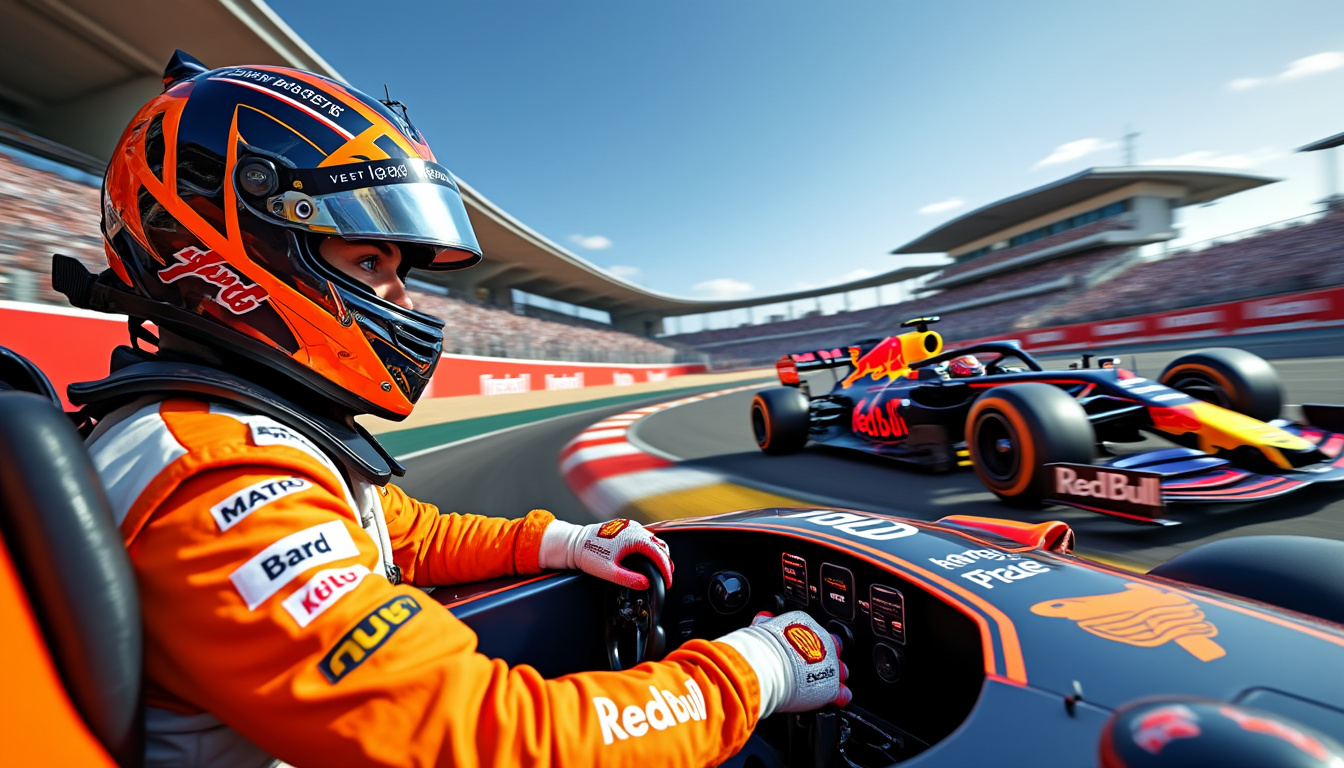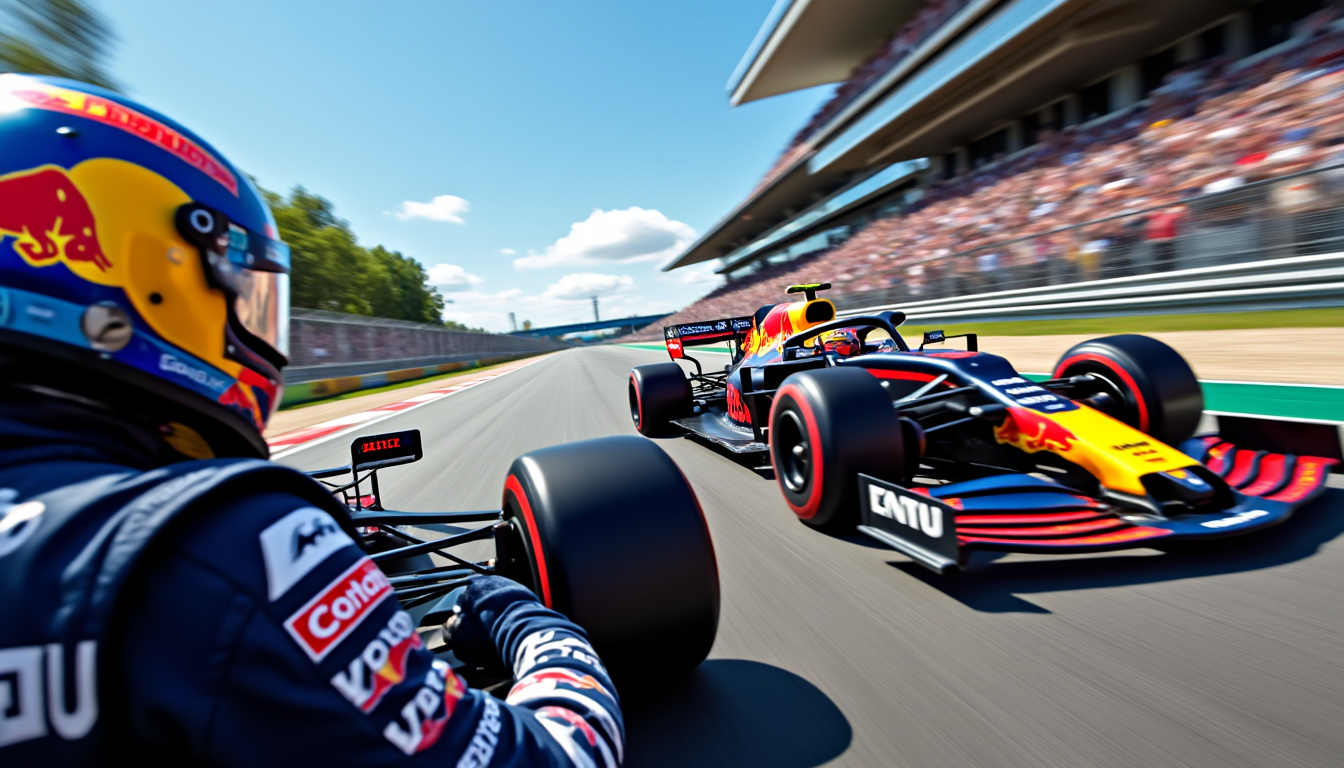As the engines roar to life and tire smoke fills the air, Formula 1 continues to thrill fans worldwide. The latest races have showcased the relentless competition between teams, revealing both triumphs and challenges. Among these narratives, one story stands out: the dominance of Red Bull racing.
In the recent back-to-back victories at Monza and Baku, Max Verstappen reaffirmed Red Bull’s status as a powerhouse in the sport. Lando Norris, a young talent from McLaren, shared his insightful observations regarding this remarkable feat. He emphasized that Verstappen’s recent wins shouldn’t come as a shock to anyone, considering the undeniable performance edge Red Bull has enjoyed. Despite McLaren’s struggles during the past races, Norris remains optimistic about their progress, acknowledging the areas where they need to improve to stay competitive. As the season unfolds, the stakes are higher, and every lap counts in this exhilarating championship chase.

Lando Norris has become one of the prominent voices in Formula 1, especially after his candid discussions regarding the current state of competition. Recently, during a press conference following the Azerbaijan Grand Prix, Norris acknowledged Red Bull’s dominance, particularly highlighting their consistent performance in various key areas where McLaren struggles. This observation sheds light not only on the performances of these two teams but also articulates the expectations surrounding them as we move further into the season.
A major takeaway from Norris’s reflections is the evolution of Red Bull’s performance. Following Max Verstappen’s back-to-back victories at Monza and Baku, Norris suggested that such successes should no longer come as a surprise. It’s evident that Red Bull has established itself as a powerhouse capable of dominating both the technical and competitive aspects of the sport. Their recent upgrades, as mentioned by Norris, have allowed them to further enhance their already superior performance. For fans and analysts alike, understanding the contributing factors to Red Bull’s edge provides insights into the intricate dynamics of Formula 1 racing.
What are the key performance areas where Red Bull excels?
Red Bull’s unwavering performance can be boiled down to several critical factors: aerodynamics, driver skill, and a robust engineering partnership. Aerodynamics play a crucial role in F1, dictating how cars behave at high speeds and their ability to navigate corners effectively. Throughout various tracks this season, Norris noted that the Red Bull car has often performed at “another level,” especially when optimally configured for various track conditions.
Moreover, driver skill cannot be understated. Max Verstappen has repeatedly shown why he is considered one of the best in the sport. His ability to extract maximum performance from the car, especially during challenging periods, sets him apart. When Norris discussed the inevitability of Red Bull overcoming McLaren’s capabilities, he acknowledged that while McLaren has shown promise, the difference in raw competitive spirit and resilience is still significant.
Lastly, a cohesive engineering team is essential for any successful Formula 1 team. Red Bull’s engineering department, led by renowned figures such as Christian Horner, has a proven track record of adapting and innovating. The implementation of performance upgrades, as seen in their strong showing at Monza, highlights how Red Bull can continually refine their car in the quest for competitive advantage. In contrast, while McLaren has made strides, there remains a gap in consistently achieving performance optimizations that translate into track success.
How does McLaren plan to bridge the gap with Red Bull?
In light of the challenges posed by Red Bull, Norris emphasized the need for McLaren to engage in intense internal evaluation. One specific area he pinpointed was the difficulty of driving the car under low-downforce configurations. This issue affects not only the lap times but also the drivers’ confidence on track. As the season progresses, McLaren must adapt both its car setup and its strategy to better align with the demands of different circuits.
Another element that McLaren must focus on is building resilience in its performance consistency. Norris admitted that while they have had an “amazing season,” certain weaknesses still exist, especially in lower downforce situations. By understanding the underlying mechanics causing these inconsistencies, the team can implement targeted improvements. Developing a robust feedback mechanism between the drivers and engineers is paramount. This systematic approach can enable McLaren to better tune their car to meet specific circuit demands, making any future competitions more competitive against Red Bull.
Furthermore, team dynamics play a crucial role. With Lando Norris and his teammate leading the driving front, a strong on-track partnership can yield insights that ultimately improve each other’s pace and strategy. This collaborative spirit will be essential in maximizing the car’s potential, ensuring that both drivers can challenge their rivals effectively.
What lessons can other teams learn from Red Bull’s approach?
Red Bull’s methodical approach to racing serves as an exemplary model for less dominant teams in Formula 1. The initial lesson revolves around innovation. Red Bull has consistently invested in R&D, which has led to remarkable enhancements in their car designs. For teams aiming to close the performance gap, prioritizing innovation in car development is essential. Exploring aerodynamic designs, weight distribution, and tire management can lead to significant performance improvements.
Another key takeaway relates to the importance of having seasoned leadership within the team. Christian Horner’s clear vision and strategic foresight have allowed Red Bull to navigate through both successes and challenges. His leadership style emphasizes the necessity of robust decision-making during critical moments, something that can be beneficial for teams seeking sustainable growth in the sport.
Moreover, fostering a culture of collaboration and communication within the team should be a priority. Having teams that not only excel in engineering but also prioritize open dialogue between drivers, engineers, and management can help diagnose issues early on and implement timely solutions. Red Bull exemplifies how a cohesive unit, grounded in teamwork, can yield remarkable results.
In essence, as the competition in Formula 1 continues to heat up, the lessons emerging from Red Bull’s unmatched performance provide a blueprint for other teams, including McLaren, for possible success in the future.
How does the current state of competition affect fan engagement?
The current dominance of Red Bull, combined with the closely watched battles from teams like McLaren, creates a captivating narrative that enriches fan engagement in the sport. Dramatic races lead to heated discussions and predictions among fans, with engaged communities forming around different teams and drivers. This dynamic hinges not just on the outcomes, but on the stories that unfold around each events.
As Lando Norris and his peers seek to bridge the gap with contenders like Red Bull, fans will witness a blend of determination and strategy that is integral to achieving success. The anticipation leading up to each race becomes more intense, especially as teams unveil their tactics and upgrades to tackle their dominant rivals.
Moreover, Formula 1’s commitment to showcasing technological advancements and the behind-the-scenes intricacies of team dynamics only serves to bolster fan interest. The unfolding complexities of the competition promise an exhilarating viewing experience, ultimately engaging a more expansive audience. With every season, fans become not only spectators but active participants in the ever-evolving saga of motorsport, driven by the narratives surrounding teams like Red Bull and McLaren.
The relentless pursuit of excellence in Formula 1 never ceases, and as teams adapt and innovate in response to their competition, the landscape of racing will continue to provide thrilling content for fans and followers alike.

